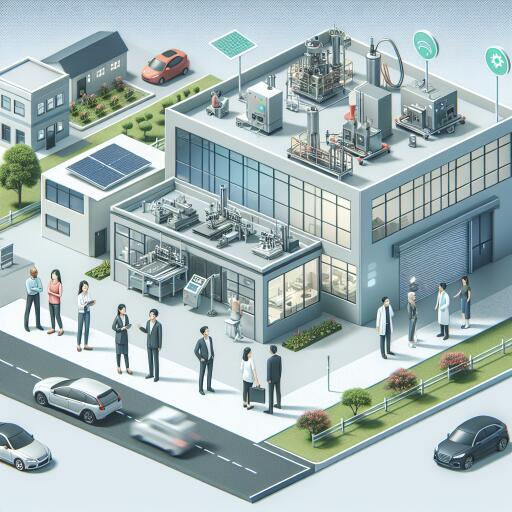Microfactories Offer a Unique Option for Local Production
In the evolving landscape of manufacturing, a new trend is on the rise, emphasizing agility, localism, and technological innovation. This trend is epitomized by the emergence of microfactories, small-scale production facilities that are breaking the mold of traditional manufacturing with their focus on customization, rapid prototyping, and use of state-of-the-art technologies.
Why Microfactories?
Microfactories are revolutionizing the manufacturing sector by providing a scalable, efficient alternative to traditional large-scale production methods. They are characterized by their small footprint and their ability to leverage cutting-edge technologies such as 3D printing, advanced robotics, and comprehensive software solutions ranging from Business Intelligence (BI) and Customer Relationship Management (CRM) to Enterprise Resource Planning (ERP) systems. This innovative approach allows microfactories to offer unparalleled flexibility and responsiveness to market needs, facilitating the production of customized products at a fast pace.
Unlike conventional factories, which are often hampered by high overhead costs, inefficiencies, and environmental issues, microfactories offer a sustainable and efficient way to manufacture goods. They stand as a beacon for the future of manufacturing, pointing towards a more adaptable and environmentally friendly model.
Technological Innovation at the Core
At the forefront of the microfactory model is an array of advanced technologies that streamline operations and enhance product quality. The integration of cloud computing technologies allows for seamless access to essential operational systems, like ERP and CRM, from anywhere in the world, thus ensuring efficient, data-driven decision-making processes. Business intelligence tools are employed to analyze market trends and consumer behaviors, enabling microfactories to adjust quickly to market demands.
Moreover, the emphasis on cybersecurity cannot be overstated. Microfactories often work with proprietary designs and innovative processes, making the protection of intellectual property and sensitive data critical. By adopting advanced cybersecurity measures along with stringent quality control systems, microfactories ensure the security and integrity of both their products and their processes.
Local Production, Global Impact
Microfactories present an effective solution to some of the most pressing global challenges in manufacturing, such as trade tensions and supply chain disruptions. By focusing on local production, they not only reduce reliance on extensive global supply networks but also benefit local economies through job creation and the promotion of a culture of innovation.
The potential for microfactories to transform local economies and the global manufacturing landscape is immense. They offer a sustainable path forward, reducing environmental impact while simultaneously meeting the demands of modern consumers for personalized, rapidly produced products.
Looking Ahead: The Future of Manufacturing With Microfactories
For IT, operations, and management professionals, the rise of microfactories signifies an exciting shift towards a more innovative, agile form of manufacturing. This evolution demands a new mindset, one that embraces flexibility, technological integration, and a nuanced understanding of market dynamics. The successful adoption of the microfactory model hinges on leveraging the latest advancements in manufacturing technology and software, underscoring the importance of staying at the cutting edge of industry developments.
As we look to the future, the role of microfactories in redefining the manufacturing sector is undeniable. They not only offer a compelling alternative to traditional production methods but also herald a new era of sustainable, efficient, and consumer-centered manufacturing. The ongoing advancement of microfactories promises to not only revolutionize local production strategies but also pave the way for a more adaptable and responsive manufacturing industry worldwide.
Indeed, the emergence of microfactories marks a pivotal moment in manufacturing, championing agility, customization, and the seamless integration of technology. For those leading the charge in IT, operations, and management within the manufacturing sector, this represents an unparalleled opportunity to redefine the essence of production in the 21st century. With a commitment to innovation and the strategic use of technology, the future of production is bright, with microfactories at its forefront.










